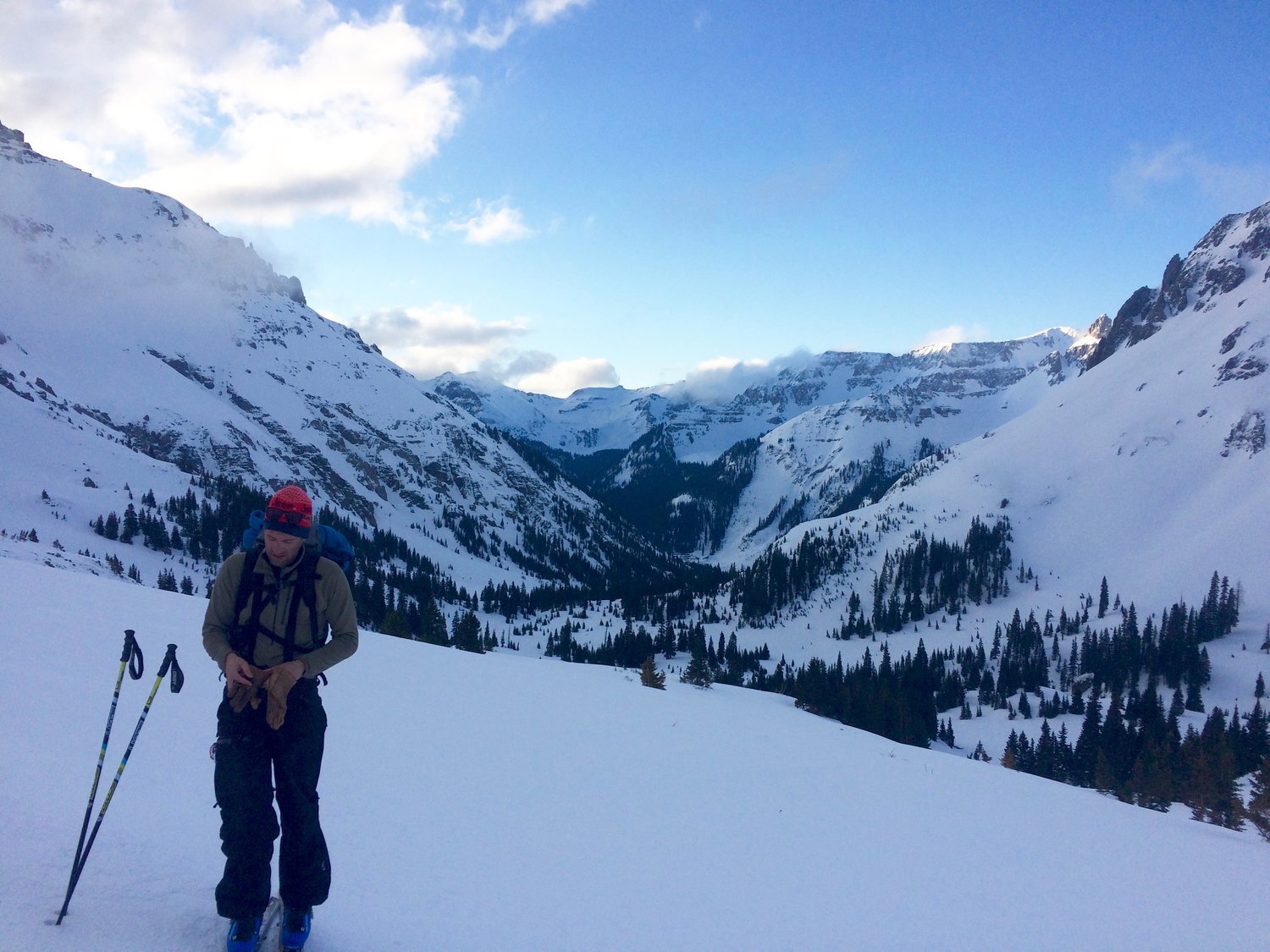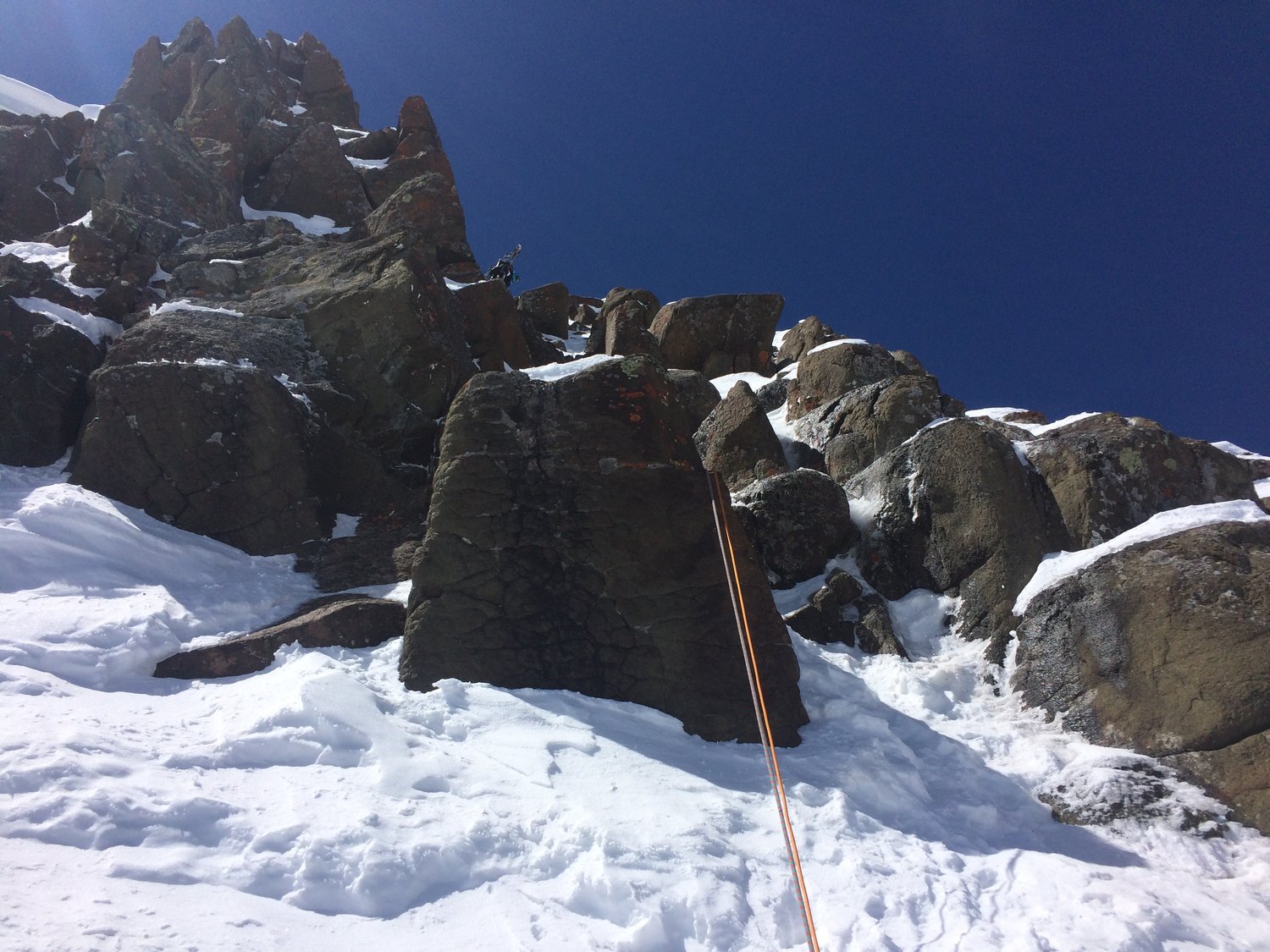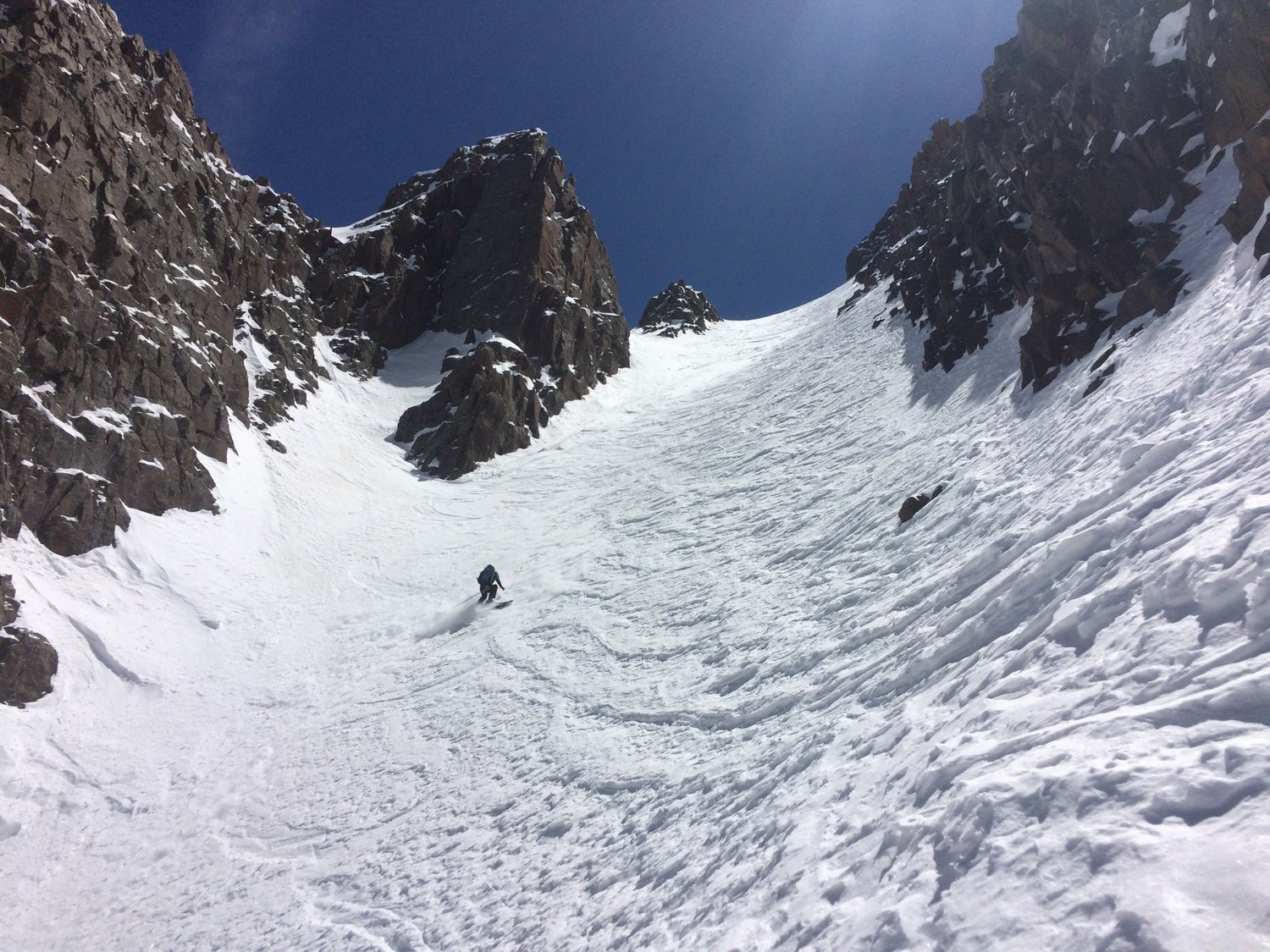Skiing the Snake Couloir on Mt. Sneffels
Although ski season isn’t here yet, this post is a throwback to one of my best days on skis, skiing the Snake Couloir on Mt. Sneffels in May, 2017. Ski mountaineering is one of my favorite activities to guide, and some recent phone calls have had me dreaming about the upcoming ski season, especially all of the dream lines that I’d like to ski. This post is mostly a recap of an awesome day in the mountains and a place I can publish some information about this ski descent. But, if reading this gets you stoked, feel free to contact me about a guided backcountry skiing or ski mountaineering trip this coming winter.
Soft snow above the choke of the Snake Couloir, Mt. Sneffels
I write this in between gazes out of my living room window in Kelly, Wyoming. It’s late September, and the Tetons have just received their first major dump of the winter, a few FEET in the alpine by my guess. In the foreground, still-green Aspen leaves are fluttering in the wind, a few of them showing off their golden fall colors. This is one of my favorite scenes in the Rockies… snow-covered peaks up high with fall foliage in the foreground. In my old stomping grounds, the San Juan Mountains in southwest Colorado, the fall colors and snowcapped peaks inspired me to get ready for winter. And no other view is as spectacular this time of year than that of 14,150’ tall Mt. Sneffels, which towers over the Uncompaghre and lower Gunnison River valleys, visible for over 100 miles to the north. It has enchanted inhabitants of the surrounding country since the Utes cultivated the valleys of the San Juans and hunted Elk high on the flanks of the peak.
Massive terrain on the approach to Mt. Sneffels
The imposing north face of the mountain is split by one of the most prized ski descents in Colorado, the Snake Couloir. Skiing the Snake is a testpiece for both locals and visiting skiers alike, because it requires mastery of all facets of ski mountaineering. Just to stand on top requires fitness at altitude, difficult skinning conditions, steep snow climbing with ice axe and crampons, and a couple of tricky moves on rock, culminating in an exposed ridge climb to the summit. From there, a single rappel off the summit leads to the couloir, hidden below, which is steeper than 45 degrees for over 1000 feet and doglegs through high rock walls. Below the dogleg, the couloir chokes down to a narrow 8-foot wide hallway before allowing passage to the apron, and slightly more security. After skiing out the glorious basin below, you must either continue down, bushwhacking to a second car stashed on this new side of the mountain, or put the skins back on and climb 2000 feet back to a saddle and the ascent route from earlier in the day. Its a huge mountain, a huge ski descent, and a huge effort to ski it in style.
Booting up the Lavender Couloir to the summit of Mt. Sneffels
On May 3, 2017, I guided a descent of the Snake Couloir in some of the best conditions I’d ever experienced up there. This time of year is sneakily good, where spring storms can deposit feet of powder onto a stable alpine snowpack. In the Rockies, snow sticks around the high country until June, at least, and the only thing stopping us from skiing into June is access to high-elevation trailheads. The Camp Bird Road in Ouray, Colorado only opens around late April or early May, and is one of the best places in the COUNTRY to ski big mountains and steep lines in the late spring. The road cuts through high snowbank to 10,600’. With an early start, we were skinning by 7am on an icy melt-freeze surface. This travel went fast, and before we knew it, we were booting up the Lavender Couloir, and a few minutes later after donning crampons and ice axes, we were standing on top at 11:30. During our break for lunch on the summit, I built an anchor on a large block, and a little after noon, we were rappelling into the couloir.
Rappelling into the Snake Couloir
Rappelling directly off the summit of a 14er is one thing; rappelling off the summit Mt. Sneffels, looking down the north face, with thousands of feet of air below your ski boots, is another. Upon landing on the snow, I dug a small flat ledge on which to click in to our skis. Once our bindings were locked, I pulled the rope, and we were committed. I’ve skied the Snake in all sorts of conditions, and this time we got lucky. A recent storm has deposited about a foot of snow, and the exposed summit of Mt. Sneffels had been largely spared any strong winds since that storm. We were about to ski the Snake Couloir in POW.
Soft snow in the upper part of the Snake Couloir, Mt. Sneffels
The top of the couloir is the steepest, and often the most firm due to wind. This time, the snow was soft, and just got deeper with every turn. We made sure to avoid our sluff, which threatened to sweep us down the couloir and through the dogleg, pinballing off the walls. The perfect snow conditions helped, and we even opened it up a bit below the dogleg, despite the steep slope angle. Once through the choke, any nerves dissipated, and all we had to do was arc Super-G turns to the valley bottom. All said and done, the day requires about 6000’ of climbing and skiing, with a full ski mountaineering kit. The quality of the line, the climb, and the summit all make this ski descent one of the best ski runs off a 14er in Colorado, and one of the most classic lines in the Rockies. Get in touch if you’d like more information, are curious about current conditions, or would like to set up a trip.
Cheers,
Jeff





